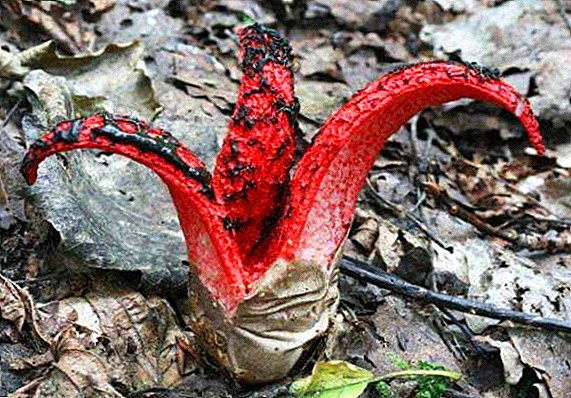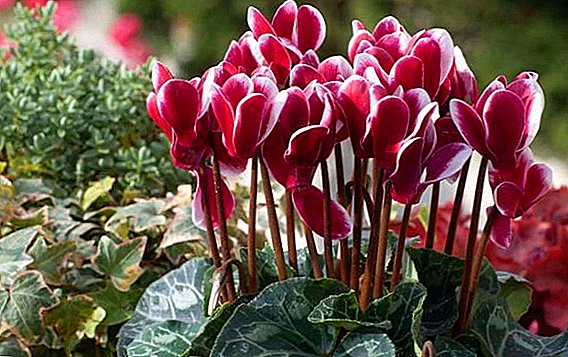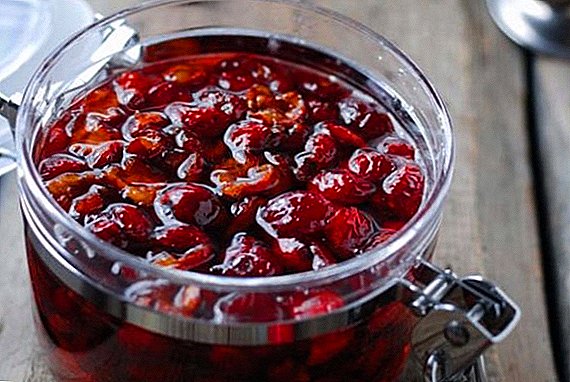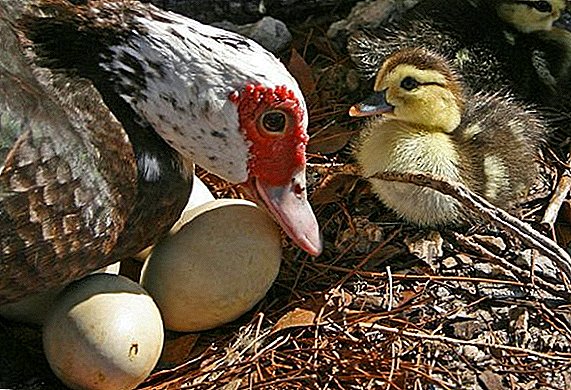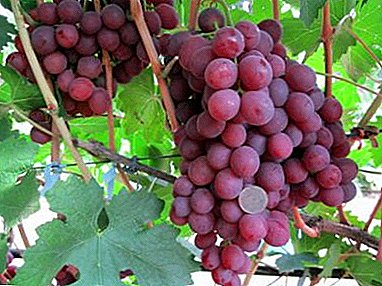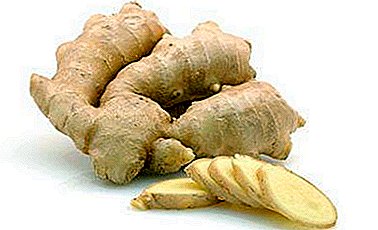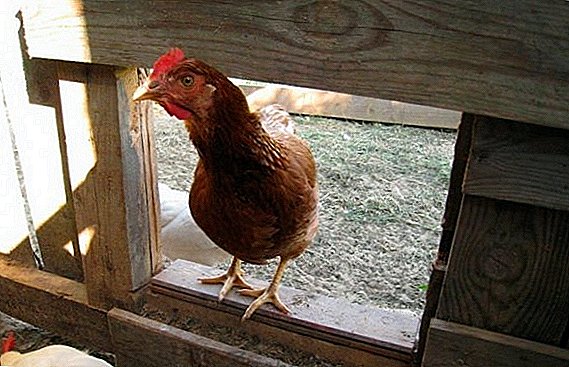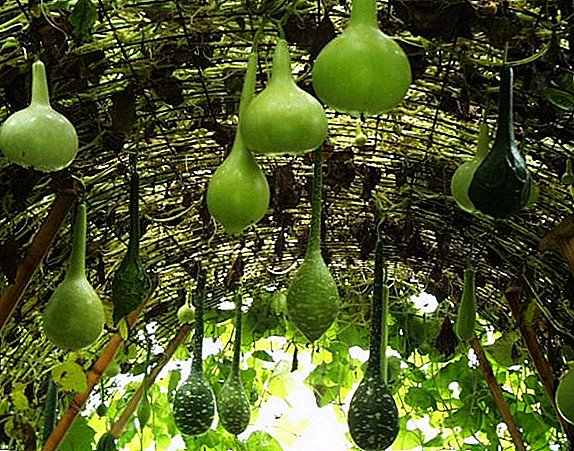 A plant with an unusual name has at least unusual properties. It is used not only for food, the fruits are removed in parts, but they themselves have bizarre forms. Not every gardener takes on the cultivation of lagenaria, and not everyone knows what it is. But the results of works are always amazing.
A plant with an unusual name has at least unusual properties. It is used not only for food, the fruits are removed in parts, but they themselves have bizarre forms. Not every gardener takes on the cultivation of lagenaria, and not everyone knows what it is. But the results of works are always amazing.
Lagenaria: a description of the culture
Many people know Lagenariya under other names: Vietnamese zucchini, Indian cucumber, calabash, bottle, bottle gourd and others. Some researchers believe that it came from India to Vietnam, and from there in 1071 to Europe. Vegetable is a direct relative of the scallops, zucchini, pumpkin. But, unlike them, is not grown as a creeping plant. To get a good harvest, you need a trellis more than two meters, since the fruits can reach a length of one and a half meters. In addition, the plant itself is decorative, so it is often planted in those parts of the garden where you want to decorate the vertical structures. Sometimes lagenaria is grown on balconies or loggias, as its agricultural technology is quite simple. 
Did you know? The fruits of the plant used to make various dishes even the ancient Romans. Today, besides dishes, they make toys, musical instruments, pipes, vases, ashtrays in Latin America, Asia, and Africa. From long stalks weave other necessary things in everyday life.Vegetable in color resembles zucchini, and in shape it can be very diverse: in the form of a lump, bottle, jug, snake-like and just elongated, like a huge two-meter-long cucumber. The weight of such fruits varies from 3 to 7 kg. Only unripe fruits, which have grown no more than 60 cm in length, can be eaten. Of them are preparing the same dishes as that of pumpkin. For example, prepare caviar, salads, pancakes. Small fruits are stuffed, but very small ones are even pickled and salted. The ripe fruits are suitable only for the manufacture of various household items. No wonder the plant is also called pumpkin. In the vessels made of it, the water does not heat up for a long time, and milk sours extremely rarely.
Features growing lagenarii, the choice of a place to plant
Often the lagenaria pick up such a place for planting, so that it can please not only with fruits, but also with all its green mass. She weaves arbors, fences, trees as an ornamental plant. At the same time care for it requires a minimum.
Heat and light for lagenaria
 As well as the usual cucumber or pumpkin, the gourd loves heat and a lot of light. At temperatures below 15 ° C, its seeds do not germinate, and young shoots in the shade develop very poorly. An adult plant can feel good in the shade of a tree, using its trunk as a support. Therefore, it is best to select open-lit areas for growing crops, where the maximum amount of heat will be in summer. But at the same time they must be protected from wind and drafts. An ideal place for lagenarii is the sunny side of trees, fences, arbors, walls of houses.
As well as the usual cucumber or pumpkin, the gourd loves heat and a lot of light. At temperatures below 15 ° C, its seeds do not germinate, and young shoots in the shade develop very poorly. An adult plant can feel good in the shade of a tree, using its trunk as a support. Therefore, it is best to select open-lit areas for growing crops, where the maximum amount of heat will be in summer. But at the same time they must be protected from wind and drafts. An ideal place for lagenarii is the sunny side of trees, fences, arbors, walls of houses.
Did you know? Vegetable has not only high yield, but also a fantastic growth rate. Just a couple of weeks after the ovary, the fruit reaches one and a half meters in length.Alternatively, lagenariya can be placed in a greenhouse or greenhouse. In this case, you are guaranteed to get the expected yield. The greenhouse must be at least two meters high and have vertical trellis inside which the plant will curl.
What kind of soil loves Lagenaria
 Lagenariya or, as it is also called, bottle gourd requires fertile soil with good drainage properties and low acidity. To do this, lay out a bed of expanded clay or broken brick 3 cm high on the bed and sprinkle it with soil, or it is necessary to dig the soil with sand.
Lagenariya or, as it is also called, bottle gourd requires fertile soil with good drainage properties and low acidity. To do this, lay out a bed of expanded clay or broken brick 3 cm high on the bed and sprinkle it with soil, or it is necessary to dig the soil with sand.
Since autumn, it is recommended to saturate the soil with the necessary fertilizers. In autumn, biomass from leaves, bark, sawdust, tops is spread on the intended landing site and sprinkled with lime on top. After overwintering in the spring, this mass is covered with manure with sawdust in which it is possible to plant seedlings.
How to grow lagenariya from seed
Lagenariya breeds only through seedlings, the cultivation of planting material from seeds starts from mid-April, although there are recommendations to do this a month before the planned planting in open ground.
How to prepare planting material
 The seeds of this exotic vegetable are quite dense, it is not easy to germinate in our conditions, so some gardeners recommend cutting the top opposite to the one where the germ is located on the seed. But this is not all. In most cases, limited to the soaking of seeds in solutions of special biopreparations. Depending on the recommendations of the drug manufacturer, this process may take from four hours to two days. Then, germination of lagenarii seeds is carried out in any wet environment. For example, in wet sawdust, where the seeds must lie for about six days at a temperature not lower than 23 ° C. At home, an ordinary central heating battery is suitable for this. This ensures 100% germination of planting material.
The seeds of this exotic vegetable are quite dense, it is not easy to germinate in our conditions, so some gardeners recommend cutting the top opposite to the one where the germ is located on the seed. But this is not all. In most cases, limited to the soaking of seeds in solutions of special biopreparations. Depending on the recommendations of the drug manufacturer, this process may take from four hours to two days. Then, germination of lagenarii seeds is carried out in any wet environment. For example, in wet sawdust, where the seeds must lie for about six days at a temperature not lower than 23 ° C. At home, an ordinary central heating battery is suitable for this. This ensures 100% germination of planting material.
Planting Lagenaria seedlings
When the first shoots appear, they are sprayed once a week with a growth stimulator and start watering as needed. The lighting should be as intense as possible. A week after the appearance of the sprouts, sawdust can be slightly sprinkled with biohumus. And only after the appearance of the third leaflet, the germinated seeds can be transplanted into separate peat-based or paper cups.
 Sprouts are placed in the soil consisting of peat, humus and river sand. Some experts recommend adding a little wood ash to the mix (per 10 kg of a mixture of 0.5 kg of ash). Seedlings of lagenaria when planting with seeds grows and grows stronger in individual containers from three to five weeks.
Sprouts are placed in the soil consisting of peat, humus and river sand. Some experts recommend adding a little wood ash to the mix (per 10 kg of a mixture of 0.5 kg of ash). Seedlings of lagenaria when planting with seeds grows and grows stronger in individual containers from three to five weeks.
Seedling care
The seedling should be in a well-lit room at a temperature of about 15 ° C. Caring for her is simple: you need watering as needed and periodic airing.
When and how to plant seedlings in open ground
If the seeds were sown in mid-April, by mid-May they are ready for planting in open ground. It is important that no less than 30 days have passed since the time of sowing, the seedlings had a height of at least 10 cm, and there was no longer a threat of frost on the ground.
In the ground digging holes about 25 cm in diameter at a distance of about a meter from each other. In each of them you need to add a handful of complex fertilizer and two handfuls of sawdust, ash, two tablespoons of superphosphate. Seedling cups placed in the hole gently, so as not to damage the root system. Top ground is recommended to mulch leaves or sawdust. Knowing that the plant lagenariya, it is recommended to carry out mulching in two layers: the usual material for shelter and film, pressed down with stones. This helps to raise the temperature at the roots of the plant, which is extremely thermophilic.
 Above the seedlings is recommended to install a protective film. It stretches on the crossbar, fixed at a height of 70 cm in the center of the garden. Its edges should extend beyond the film, which covers the ground. When it gets warmer outside, the top cover is slightly opened. Finally, it is removed when stable warm weather is established. As a rule, at this time the plant begins to bloom and is already long enough to install it on the trellis.
Above the seedlings is recommended to install a protective film. It stretches on the crossbar, fixed at a height of 70 cm in the center of the garden. Its edges should extend beyond the film, which covers the ground. When it gets warmer outside, the top cover is slightly opened. Finally, it is removed when stable warm weather is established. As a rule, at this time the plant begins to bloom and is already long enough to install it on the trellis.
Features care lagenariya in the open field
Lagenariya does not require complex methods of cultivation and care. It is enough to properly watering, feeding and spraying. The latter is carried out approximately once every two to three weeks with special preparations, for example, Ovary.
Watering and feeding lagenarii
These vegetable care measures are no different from pumping care.. You can feed lagenaria with mullein twice a summer and three times with potassium sulfate at the rate of a tablespoon per bucket of water. To improve the taste of vegetables, you can add Magbor fertilizer once per season in the same proportion. When the fruits are poured, two handfuls of ash can be poured under each bush.
Important! Bottle gourd blooms flowers in the evening and blooms at night, so its cultivation requires manual pollination. To do this, take the pollen from the male flowers, which by day are on the lighted branches, as in the flowers growing in the shade, the pollen is sterile. It is also unsuitable if water gets into the flower.
 There are other schemes feeding plants. For example, once a week during the entire vegetation period, to give the drug "New Ideal" at the rate of a lid of liquid per liter of water. Spray alternately with Silk and Epic growth promoters several times a season. When the plant begins to bear fruit, it is recommended to give foliar feeding with means "Two crops".
There are other schemes feeding plants. For example, once a week during the entire vegetation period, to give the drug "New Ideal" at the rate of a lid of liquid per liter of water. Spray alternately with Silk and Epic growth promoters several times a season. When the plant begins to bear fruit, it is recommended to give foliar feeding with means "Two crops".The scheme of watering the plant is the same as for the pumpkin. It is generally recommended to water it as necessary, preventing the soil from drying out, but also not flooding it. But there is an opinion that it is better not to pour the lagenarius than to pour it, otherwise the risk of diseases increases and the taste of the fruit worsens. When watering it is necessary to ensure that water does not fall on the root neck of the plant. If this happens, it should be sprinkled with ashes. It is necessary to water a plant only with warm water. By the end of August, watering is stopped so that the fruits can ripen well.
Lagenaria support
The question of how to properly grow lagenaria, rests on the need to install a support for the plant: the culture is curly, long, and its fruits are large and heavy. For this, it is necessary to install on the garden a trellis-ladder with a height of at least two meters, onto which, as it grows, to tie up the fruits and lash of the plant. But you can land in front of the lagenariya against the wall, fence or fence and shoot them as a decoration.  On the trellis to tie the lash is necessary through every meter of escape. If the lagenaria grows against a wall or fence, it is necessary to direct the shoots upwards so that its antennae can be mounted in the right direction.
On the trellis to tie the lash is necessary through every meter of escape. If the lagenaria grows against a wall or fence, it is necessary to direct the shoots upwards so that its antennae can be mounted in the right direction.
Pinching and pruning
Lagenariya is a plant that, in addition to special rules for planting and care, requires timely pinching and pruning. This helps to stimulate the growth of side branches and limit the growth of the main shoot. Otherwise, it can stretch up to 15 meters. Even side shoots can reach 10 m in length. Considering that the height of the tapestry usually does not exceed two meters, the lash has to be sent up and down.
Important! In whatever direction the growth of the shoot is directed, its top must always be in the sun.Pinching shoots begin when their length reaches three meters. Such events stimulate the appearance of female inflorescences, on which fruits are formed.
Features of bottle gourd harvesting
 Vegetable has a high yield. Up to 60 kg of fruits can be removed from one bush, and even more in high-yielding years. Remember, if you plan to eat them, you need to remove the immature vegetables.
Vegetable has a high yield. Up to 60 kg of fruits can be removed from one bush, and even more in high-yielding years. Remember, if you plan to eat them, you need to remove the immature vegetables.
If you plan to collect seeds, the crop can be left until autumn, but removed, without waiting for frosts, otherwise it will not be stored for a long time. It is better to remove the immature vegetable with a part of the shoot and leave it at the central heating battery. So he will be able to ripen in some time, and by December he will dry up, leaving intact seeds inside. After that, the vegetable can be opened and get them. They survive up to 10 years.
Did you know? To enjoy the harvest, it is not necessary to remove the entire lagenaria fruit. Can be cut from the ripened vegetable required amount. The only condition: it should be done in dry weather, and the cut can be covered with activated carbon. Then it will drag on, no infection will get into it, and a corky crust will form at the site of the cut. The vegetable will continue to fill further.The unique Lagenaria plant is interesting not only as a vegetable. It tastes like pumpkin family vegetables. But the fruits are so original form that the plant is also grown for decorative purposes, including as a decoration of hedges, walls and trees. When ripening, they are used as the basis for the manufacture of various household items. At the same time care for the plant is simple. It is important to provide him enough light and heat.


